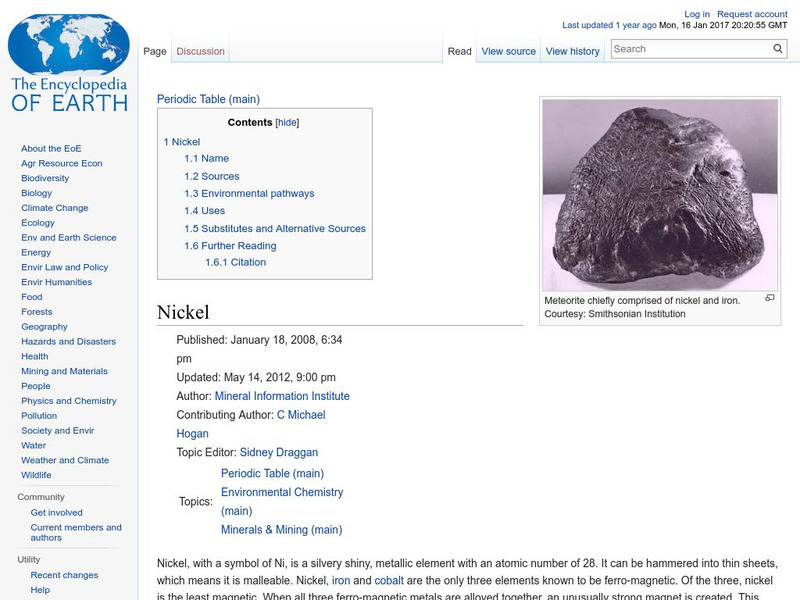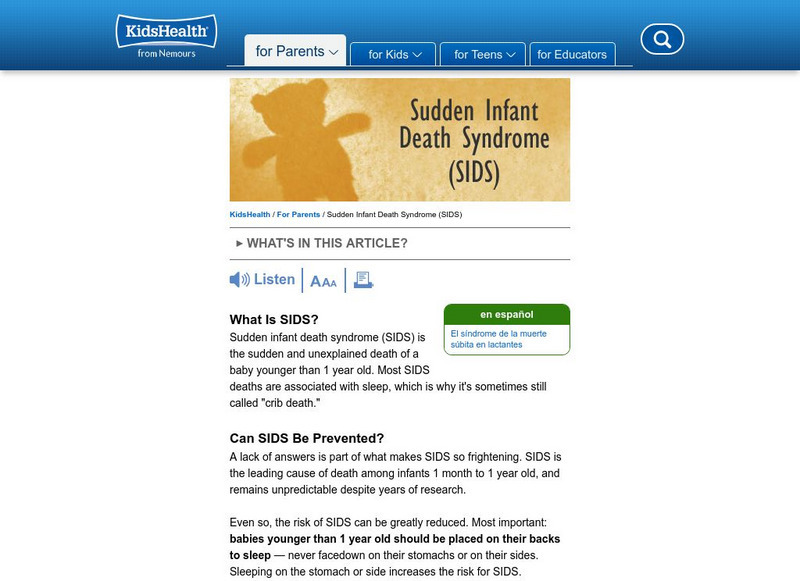Curated OER
Pesticides in Schools
Students investigate the practices their school uses for pest control. Depending on their findings, students may suggest alternative, non-chemical methods. They present a pest control plan to school officials. Great, real life lesson!
Curated OER
Fitness Trail
Students design a fitness trail which incorporates warm-up, aerobic, and cool-down phases. Each student develops their own plan and monitors their own progress through the use of an exercise log.
Curated OER
Population Dynamics
Students investigate the causes and consequences of population growth and the envrionmental factors that contribute to it. They discuss what they think the world's population will be in 2050.
Curated OER
The Aging Brain: A Lesson on Alzheimer's Disease
Young scholars investigate the aging brain and its relationship to the occurrence of Alzheimer's disease. They need to have prior knowledge of brain and nervous system anatomy in order to participate in this lesson plan. Students compare...
Curated OER
Chicken Pox Math
Second graders are read a story about a boy with chicken pox. As a class, they discuss what to do when you have a contagious disease and identify who in the class has had chicken pox. Using this information, they create a graph and use...
Missouri Department of Elementary
Safe and Healthy Life Choices (Part 2)
Scholars listen to a presentation by a health care professional and then submit three questions they would like the speaker to discuss further.
Curated OER
Incentives, Profit and the Entrepreneur
Students discuss hypothetical problems associated with price and profit. They discuss the fairness of profit, how it should be measured, and the consequences of setting acceptable levels of profit.
Curated OER
Testing Leaves for Starch: the Technique
Like good scientists, kids often want to see first-hand why things are as they are; they can do just that in the starch-testing photosynthesis activity found here. Depending on the age of your pupils, you may wish to do the investigation...
Curated OER
Are You Susceptible?
Students play a game to explore the relationship between genetic variation and environmental factors in the onset of heart disease. They consider the implications for disease prevention of increased knowledge about genetic variation.
Curated OER
Going to Extremes: High Anxiety
High schoolers examine the dangers of mountain climbing. After watching a video, they discuss the role of a German research team going into the Alps to predict who is going to adjust to the change in oxygen levels. They discover the...
Curated OER
Economics: Incentives, Profit, and the Entrepreneur
Students discuss both positive and negative economic incentives. In this lecture-based lesson plan, they examine a simulation about profiteering drug companies and what might happen if the FDA controlled drug production.
Curated OER
Dietary Guidelines
Students study the dietary guidelines and what they do. In this healthy eating lesson students study nutrition labels and calorie needs.
Curated OER
Indoor Air Quality
Students examine the role of pollution indoors rather than outdoors. They identify pollutant sources and complete a KWL chart. They also measure pollutant levels and discuss how they can improve air quality.
Curated OER
Integrated Pest Management
Young scholars compare and contrast the role of the honeybee in nature. They find information by using a variety of resources that could include the internet. Students take part in a paper and pencil formal evaluation with questions that...
Curated OER
Breaking News English: UK Hospitals Ban Cooing a Babies
In this English worksheet, students read "UK Hospitals Ban Cooing a Babies," and then respond to 47 fill in the blank, 7 short answer, 20 matching, and 8 true or false questions about the selection.
Curated OER
Environment: How'd That Pollution Get There?
Students examine how global wind and water patterns aid in the spread of worldwide pollution. In groups, they read articles about the domino effect of pollution and create posters displaying its journey. On blank world maps, students...
Curated OER
Financial Dieters Make Progress
Students give financial advice. For this financial lesson, students read real-life financial problems. They explore the problem and make recommendations for a financial remedy.
Curated OER
Make Way for Wild Migrants
Students discuss the threats facing migratory species and track the seasonal journeys of wildlife in real space and in cyberspace. Once they have gathered information from several sources, they create a portfolio to share with others...
Curated OER
Watch Over Wild Wanders
Students collect and organize data relating to migratory species and habitats; undertake a habitat action plan, then maintain planting and building projects for continuing benefit to wildlife; understand the unique needs of migratory...
Curated OER
Queen Elizabeth II Addresses United Nations
Students examine an article that discusses Queen Elizabeth's address to the United Nations General Assembly. In this lesson, students complete several assignments that are centered around the topic of the article, including vocabulary,...
Other
Healthfinder: Reduce Your Risk of Stroke
Provides an overview on the basics of risk factors that may contribute to a stroke along with tips on ways to prevent one. Interactives include a quiz and a tool to track your family history.
Encyclopedia of Earth
Encyclopedia of Earth: Environmental Chemistry: Health Effects of Nickel
Explains what nickel is, ways it is used, how it is produced, how it gets into the environment and into our bodies, and the health effects of exposure to nickel. Also discusses how to reduce the risk of exposure. Has links to additional...
Cynthia J. O'Hora
Mrs. O's House: Health Community Project
Use these resources and create a project identifying an issue with the health of people in the community and working out actions that could be taken to reduce the problem.
Curated OER
Kids Health: Sudden Infant Death Syndrome (Sids)
The article explains what is currently known about Sudden Infant Death Syndrome and suggest a number of ways to reduce the risk to babies.























